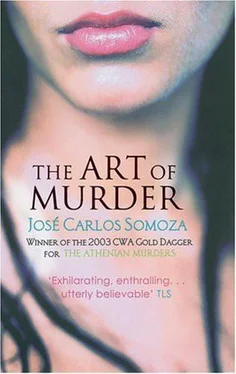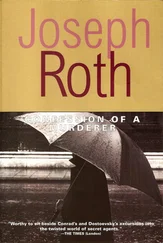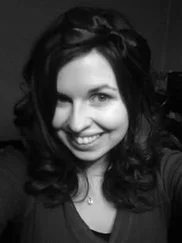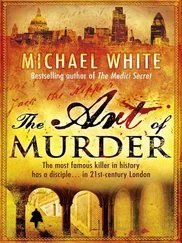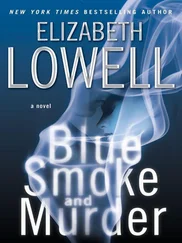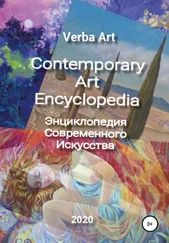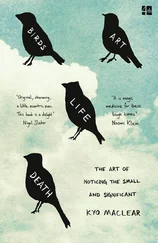Jose Somoza - Art of Murder
Здесь есть возможность читать онлайн «Jose Somoza - Art of Murder» весь текст электронной книги совершенно бесплатно (целиком полную версию без сокращений). В некоторых случаях можно слушать аудио, скачать через торрент в формате fb2 и присутствует краткое содержание. Жанр: Триллер, на английском языке. Описание произведения, (предисловие) а так же отзывы посетителей доступны на портале библиотеки ЛибКат.
- Название:Art of Murder
- Автор:
- Жанр:
- Год:неизвестен
- ISBN:нет данных
- Рейтинг книги:4 / 5. Голосов: 1
-
Избранное:Добавить в избранное
- Отзывы:
-
Ваша оценка:
- 80
- 1
- 2
- 3
- 4
- 5
Art of Murder: краткое содержание, описание и аннотация
Предлагаем к чтению аннотацию, описание, краткое содержание или предисловие (зависит от того, что написал сам автор книги «Art of Murder»). Если вы не нашли необходимую информацию о книге — напишите в комментариях, мы постараемся отыскать её.
Art of Murder — читать онлайн бесплатно полную книгу (весь текст) целиком
Ниже представлен текст книги, разбитый по страницам. Система сохранения места последней прочитанной страницы, позволяет с удобством читать онлайн бесплатно книгу «Art of Murder», без необходимости каждый раз заново искать на чём Вы остановились. Поставьте закладку, и сможете в любой момент перейти на страницу, на которой закончили чтение.
Интервал:
Закладка:
That night they made love at his place. It was as it always was: a delicately pleasurable exercise. She was a canvas, and he had to be careful. Sometimes he would ask her why she was not so careful with herself in the brutal interactive reunions known as art-shocks she sometimes took part in. 'That's different, it's art,' she would reply. 'And in art anything goes, even damaging the canvas.' 'Ah!' he would say. And go on adoring her.
He was crazy about her. He was fed up with her. He never wanted to leave her. He wanted never to see her again.
'You won't be able to give her up,' his brother Pedro warned him one day. 'It's always the same when we fall for a painting: we've no idea why we like it so much, but we can't get rid of it.'
*
Clara was not sure what she felt for Jorge. It was not love, of course, because she did not believe she had ever felt true love for anyone or anything except for art (people like Gabi or Vicky were facets of that diamond). And she guessed Jorge was not in love with her either. She could understand that for him it was very satisfactory to have made it with a canvas: it was the same kind of status symbol as buying himself a Lancia or a Patek Philippe, having an appartment in Conde de Penalver, or being the boss of a profitable radiological institute. 'Going to bed with a painting is a kind of a luxury, isn't it, Jorge? Something your social class likes to do.'
Naturally she found him attractive: that shock of white hair, and that moustache standing out in his huge frame, those grey eyes of his, his manly chin. It excited her to think he was an older man she was perverting. She loved it when she made him blush. But she also enjoyed thinking the opposite was true: that it was he who was perverting her. Her white-haired master. The sunbed-tanned mentor. And on top of it all, Jorge was not part of the art world – a detail rare enough to make him extra special.
On the other side of the balance was his complete vulgarity. Doctor Atienza was of the ridiculous opinion that hyperdramatic art was a kind of legalised sexual slavery, twenty-first century prostitution. He could not understand why someone might want to buy a naked minor whose body had been painted, simply to put them on show in their house. He thought Bruno van Tysch was a playboy whose sole merit had been to inherit a stupendous fortune. When she heard Jorge's pronouncements, she felt bitter. What she hated above all in this world was mediocrity. Clara longed for genius like a bird longs for the infinite air. But she could understand the reason for all this mediocrity. Unlike her, his profession did not demand he give his heart and soul to it. Jorge had never felt that shudder of emotion, the sense of fragility and fire that a model felt in the hands of an expert painter; he knew nothing of the nirvana of quiescence, the wing-beats of time in a paralysed salon, the gaze of the public like cold acupuncture on the body
Neither of them was sure where this relationship of dates and shared nights might lead. Probably nowhere. Jorge wanted children, and occasionally said so. She looked at him with pitying compassion, as a martyr might look at someone who was asking: Does it hurt? The only life she wanted to reproduce, she would tell him, was her own. 'Don't you see, every time I'm a painting, it's as if I'm giving birth to myself?' Of course, he couldn't understand her.
Perhaps what she valued most of all in him was his calm nature, his ability to give her good advice. Even when he was asleep, Jorge was therapeutic: he breathed steadily, was not troubled by any nightmares, did not get afraid in dark rooms (she did), was a lesson in the perfect way to rest. His words were like creams prescribed by an amiable doctor, his smile an instantly effective sedative. All this was far removed from her world, and immensely welcome. Right now, she needed a large dose of Jorge.
'Are you sure you're not being duped?' he asked, trying to appear doubtful.
'Of course I am. This is the most important thing that has ever happened to me. Not only am I going to earn more money than I ever dreamed possible, but I'm going to become… I'm sure I'm going to become a… a great work of art.' Jorge noticed she had hesitated, as if anything she could say would be far beneath the reality of what was to happen to her. 'Today they told me that in another twenty-four thousand years, they would still be talking about me’ she added in a whisper. 'Can you believe it? The Foundation woman told me so. Twenty-four thousand years. I can't stop thinking about it. Can you believe it?'
She had just given him a brief summary of all that had happened. She told him about the two men visiting the GS gallery, and her interview with Friedman on the Thursday. After that, she had been primed by five experts: Friedman himself examined her hair and skin; a Senor Zumi her muscles and joints; Senor Gargallo prepared her physiology; and the Montforts fine-tuned her concentration and habits. Friedman received her in the basement of the Desiderio Gaos building once they had stripped her, destroyed her clothing, and taken photographs of her for the insurance company. He felt her all over. Her hair, he said, needed cutting. Then it had to be coated with a gel that would allow it to be painted. He did not consider her skin soft enough, so prescribed creams she would need to rub on. He noted any abrasions or wrinkles. He observed the movement of her Adam's apple when she swallowed, and how her ribcage showed with her breathing, how her nipples reacted to pressure or cold, the character of all her muscles. After that, he probed each and every hole and cavity with his fingers and light. 'Spare me the details,' Jorge begged her.
Zumi, a mysterious Japanese man of few words, saw her on the first floor once Friedman had finished with her. For hours, it seemed, Clara had to hang from various pieces of apparatus in the gym there. Zumi discovered a certain laxity in her cervical vertebrae, and a tendency to accumulate lactic acid in her legs. Through beads of sweat, she could see him smile silently at each successive torture: balancing on one leg, being strung from the ceiling by the ankles, standing on tiptoe on a bench, bending over backwards, raising her arms with weights attached to her biceps. Two hours later, the exhausted material was passed on to Senor Gargallo on the third floor. Gargallo was an expert in the canvas' physiological reactions. He had a huge collection of his experiments on film, an absolutely repugnant DVD library. He was convinced of his own uselessness.
'The only organ that matters is the one I'm not expert in,' he told Clara, tapping his forehead. 'Fortunately, I am expert in the second most important one.' He pointed to his groin.
He was a plump, affable fellow, with a yellowish complexion, goatee beard and round, smudged glasses. He began by warning her that his job was 'an unavoidable mess'. 'Naturally, we'd like to be a pure work of art like a piece of canvas or a lump of alabaster,' Gargallo philosophised. 'But we are alive. And life is not art: life is disgusting. My task is to stop life behaving like life.'
The exercises he put her through were yet another nightmare: the material – her, naked and immobile – had to put up with drops being spread under her eyelids; feathers tickling her in remote folds of her body; drugs which activated her bowels and her bladder at the same time, or changed her mood, increasing or decreasing her libido or simply gave her a headache; pills that suddenly made her blood pressure collapse, or made her feel cold, hot, or itchy all over (my God, the desire to scratch, forbidden in any painting); the dizziness of intense hunger; the raging curse of thirst; the stinging threat of insects and other creatures -'in outdoor pieces they often crawl up legs', Gargallo explained; extreme tiredness and sleep, that steamroller of awareness that can flatten the willpower of any permanent work of art. Gargallo tried out further tests, made adjustments here and there when he saw the material was suspect, prescribed a few pills, noted down problems.
Читать дальшеИнтервал:
Закладка:
Похожие книги на «Art of Murder»
Представляем Вашему вниманию похожие книги на «Art of Murder» списком для выбора. Мы отобрали схожую по названию и смыслу литературу в надежде предоставить читателям больше вариантов отыскать новые, интересные, ещё непрочитанные произведения.
Обсуждение, отзывы о книге «Art of Murder» и просто собственные мнения читателей. Оставьте ваши комментарии, напишите, что Вы думаете о произведении, его смысле или главных героях. Укажите что конкретно понравилось, а что нет, и почему Вы так считаете.
